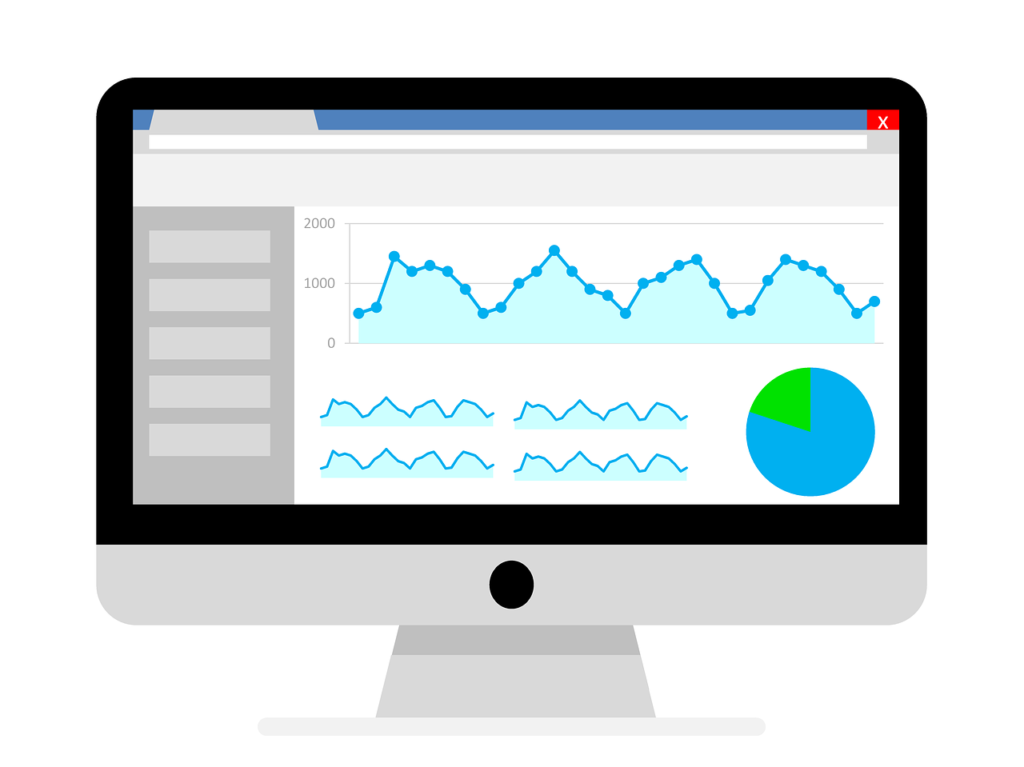In this article, we will explore the power of data in making effective marketing decisions. Data has become an invaluable asset for businesses, providing insights into customer behavior, preferences, and trends. By harnessing the potential of data, you can optimize your marketing strategies, target the right audience, personalize your messaging, and ultimately drive better results. Discover how leveraging data can give you a competitive edge and elevate your marketing efforts to new heights.
Understanding the Importance of Data in Marketing
In today’s digital age, data plays a crucial role in the success of marketing efforts. Data provides valuable insights and allows marketers to make informed decisions and tailor their strategies to the needs and preferences of their target audience. By analyzing and interpreting data, marketers can gain a deeper understanding of consumer behavior, identify trends, and optimize their marketing campaigns for better results.
How Data Can Drive Marketing Success
Data is the backbone of effective marketing campaigns. It provides marketers with the insights needed to understand their target audience, fine-tune their messaging and promotional efforts, and deliver personalized experiences. By collecting and analyzing data, marketers can identify which marketing channels are most effective, measure the success of their campaigns, and make data-driven decisions to boost their overall marketing performance.
Why Data-Driven Marketing is Essential
Data-driven marketing is no longer just a fancy buzzword but an essential strategy for business success. By leveraging the power of data, marketers can move away from guesswork and make informed decisions based on tangible evidence. Data-driven marketing allows companies to invest their resources in the right places, deliver personalized experiences, and measure the success of their campaigns accurately.
Common Challenges in Data-Driven Marketing
While data-driven marketing offers numerous benefits, it also comes with its fair share of challenges. One common challenge is the overwhelming amount of data that marketers need to collect and analyze. Managing and organizing Big Data can be a daunting task, requiring the utilization of proper data management techniques and tools. Additionally, ensuring data security and compliance with privacy regulations is another challenge that marketers need to address to build trust with their customers.
Collecting Relevant Data
To drive effective marketing campaigns, it is crucial to collect relevant data that aligns with your marketing goals and objectives. The following steps can help you collect the right data for your marketing efforts:
Defining Your Marketing Goals
Before collecting any data, it is essential to clearly define your marketing goals. What are you trying to achieve with your marketing campaigns? Are you looking to increase brand awareness, generate leads, or drive sales? Defining your goals will help you identify the specific data points you need to collect.
Identifying Key Performance Indicators (KPIs)
Next, you need to identify the key performance indicators (KPIs) that align with your marketing goals. KPIs are measurable values that indicate the success of your marketing efforts. For example, if your goal is to increase website traffic, your KPIs could include the number of website visitors, time spent on the site, and bounce rate.
Selecting Data Sources
Once you have defined your goals and identified your KPIs, you need to determine the best data sources to collect the necessary data. Data sources can include customer surveys, website analytics, social media insights, and third-party data providers. It is essential to ensure that the data you collect is accurate, reliable, and relevant to your marketing objectives.

Organizing and Managing Data
Once you have collected the relevant data, it is crucial to organize and manage it effectively to derive meaningful insights. Here are some steps to organize and manage your marketing data:
Creating a Data Management Plan
Developing a data management plan is vital to ensure the systematic organization and storage of your collected data. This plan should include guidelines for data collection, storage, and accessibility, as well as protocols for data backup and security. It is also essential to establish roles and responsibilities within your team and define data governance policies to maintain data integrity.
Implementing Data Collection Tools
Utilizing data collection tools can streamline your data gathering process and automate data collection from various sources. These tools can range from website analytics platforms like Google Analytics to customer relationship management (CRM) software. Choosing the right tools based on your specific needs and goals can simplify data collection and improve overall marketing efficiency.
Utilizing Customer Relationship Management (CRM) Systems
A CRM system is a valuable tool for organizing and managing customer data. It allows you to track customer interactions, collect and store valuable data, and analyze customer behavior patterns. A CRM system can help you segment your audience, personalize your marketing efforts, and effectively manage customer relationships.
Analyzing and Interpreting Data
Analyzing and interpreting data is a crucial step in turning raw data into actionable insights that drive marketing success. Here are some essential processes involved in data analysis:
Data Cleaning and Preprocessing
Before conducting any analysis, it is essential to clean and preprocess the data to ensure accuracy. This involves removing any duplicate or irrelevant data, addressing missing values, and standardizing data formats. By cleaning and preprocessing the data, you can eliminate potential biases and inconsistencies, ensuring reliable and accurate insights.
Exploratory Data Analysis (EDA)
Exploratory Data Analysis involves exploring the dataset to identify patterns, relationships, and outliers. This process can involve visualizing data through charts, graphs, and histograms to understand the distribution of variables, identify trends, and uncover any significant insights that may influence marketing decisions.
Statistical Analysis and Hypothesis Testing
Applying statistical analysis techniques to your data can provide you with quantitative insights and validate hypotheses. This involves using statistical tests, such as t-tests or regression analysis, to measure the significance of relationships between variables. Through statistical analysis and hypothesis testing, marketers can gain a deeper understanding of the impact of various factors on marketing outcomes.

Segmenting and Targeting
Segmentation and targeting allow marketers to divide their target audience into distinct groups and tailor their marketing efforts accordingly. Here are some key aspects of segmentation and targeting:
Demographic and Psychographic Segmentation
Demographic segmentation involves categorizing your audience based on demographic characteristics such as age, gender, income, and education level. Psychographic segmentation focuses on the psychological and lifestyle characteristics of your target audience, such as personalities, values, interests, and behaviors. By segmenting your audience based on demographics and psychographics, you can create more targeted and personalized marketing messages.
Behavioral and Geographic Segmentation
Behavioral segmentation categorizes your audience based on their actions, such as purchasing behavior, engagement with your brand, or response to marketing campaigns. Geographic segmentation involves dividing your audience based on their geographic location. Understanding the different behaviors and needs of segments within your target audience helps you tailor your marketing efforts to resonate with each group.
Identifying Target Audiences
The process of identifying target audiences involves selecting specific segments that are most likely to respond positively to your marketing efforts and have the highest potential for conversion. By identifying your target audiences, you can focus your resources and crafting marketing messages that are tailored to their needs, increasing the effectiveness of your campaigns.
Personalization and Customer Profiling
Personalization is a powerful marketing strategy that involves tailoring marketing messages and experiences to individual customers. Here are some key aspects of personalization and customer profiling:
Leveraging Data for Personalized Marketing
Data plays a crucial role in enabling personalized marketing. By leveraging customer data, such as purchase history, browsing behavior, and demographic information, marketers can create personalized experiences for customers. Personalization can be achieved through targeted email marketing, dynamic website content, personalized recommendations, and tailored advertising campaigns.
Creating Customer Personas
Customer personas are fictional representations of your ideal customers based on data and insights. They help marketers understand their target audience on a deeper level and guide marketing strategies. Creating customer personas involves analyzing demographic data, psychographic characteristics, and behavioral patterns to create detailed profiles that represent different segments within your target audience.
Utilizing Predictive Analytics
Predictive analytics uses historical and real-time data to forecast future trends, behavior, and events. By utilizing predictive analytics, marketers can identify patterns and make informed predictions about customer preferences, purchase likelihood, and response to marketing campaigns. This allows for proactive decision-making and targeted marketing strategies.

Testing and Experimentation
Testing and experimentation are essential for optimizing marketing campaigns and improving overall performance. Here are some key aspects of testing and experimentation:
A/B Testing and Conversion Rate Optimization
A/B testing involves comparing two versions of a marketing element to determine which one performs better. This can include testing different headlines, email subject lines, call-to-action buttons, or landing page designs. By conducting A/B tests, marketers can optimize their campaigns for higher conversion rates, ensuring that their efforts are effective.
Multivariate Testing
Multivariate testing involves testing multiple variables and combinations to determine the best combination for maximum impact. This allows marketers to understand how different elements and their combinations influence customer behavior and campaign success. Multivariate testing provides insights into the interaction effects of different variables, enabling marketers to identify the most effective combinations.
Incremental Testing
Incremental testing involves testing changes or variations in marketing strategies and measuring their incremental impact on desired outcomes. By conducting incremental testing, marketers can determine the specific impact of each change or adjustment, enabling them to refine and optimize their strategies systematically.
Monitoring and Tracking
Monitoring and tracking the performance of marketing campaigns in real-time is essential for timely decision-making and ensuring campaign success. Here are some key aspects of monitoring and tracking:
Real-Time Monitoring of Marketing Campaigns
Real-time monitoring allows marketers to track the progress and performance of their campaigns as they unfold. This involves monitoring campaign metrics, such as website traffic, conversion rates, click-through rates, and social media engagement, in real-time through analytics tools. Real-time monitoring enables marketers to identify any issues or opportunities promptly and make necessary adjustments to optimize campaign performance.
Measuring and Tracking Key Metrics
Measuring and tracking key metrics is crucial for evaluating the success of marketing campaigns. Key metrics can include ROI (Return on Investment), customer acquisition costs, customer lifetime value, customer satisfaction, and engagement metrics. By consistently tracking these metrics, marketers can assess the effectiveness of their efforts and identify areas for improvement.
Utilizing Data Visualization Tools
Data visualization tools help marketers present data in a visually appealing and easily understandable format. Graphs, charts, and dashboards can visualize complex marketing data, making it easier to identify patterns, trends, and insights. Data visualization tools facilitate effective communication of data to stakeholders and assist in making data-driven decisions.

Optimizing Marketing Strategies
Optimizing marketing strategies is an ongoing process that involves continuous improvement based on data-driven insights. Here are some key aspects of optimizing marketing strategies:
Identifying Opportunities for Optimization
Analyzing data can reveal areas in your marketing strategies that can be optimized for better performance. By identifying opportunities for optimization, such as underperforming channels, low conversion rates, or missed target audience segments, marketers can make informed decisions to improve campaign outcomes.
Using Data to Improve Campaign Performance
By analyzing customer data, marketers can gain a deeper understanding of customer behavior, preferences, and needs. This knowledge can be used to fine-tune marketing campaigns and messaging, target specific segments, and deliver personalized experiences. Using data to improve campaign performance involves making data-driven adjustments to marketing strategies for higher effectiveness.
Adjusting Marketing Tactics Based on Insights
Data can provide valuable insights into the success or failure of specific marketing tactics. By regularly reviewing and analyzing campaign data, marketers can identify tactics that are not delivering the desired results and make necessary adjustments. Adjustments may include changing messaging, revising targeting parameters, optimizing ad placements, or allocating resources to more effective channels.
Ensuring Data Security and Privacy
In an era where data breaches and privacy concerns are prevalent, ensuring data security and privacy is critical for building trust with customers. Here are some key aspects of data security and privacy:
Data Protection Measures
Implementing robust data protection measures is essential to safeguard customer data from unauthorized access or breaches. This involves implementing firewalls, encryption methods, access controls, and secure data storage and transmission protocols. By prioritizing data protection, marketers can instill confidence in customers and ensure the security of their personal information.
Compliance with Data Regulations
Compliance with data regulations is vital to maintain ethical and legal practices in data-driven marketing. Marketers must ensure that they adhere to applicable data protection and privacy regulations, such as GDPR (General Data Protection Regulation) or CCPA (California Consumer Privacy Act). This involves obtaining proper consent from customers for data collection and processing and providing transparent policies regarding data usage and storage.
Maintaining Data Integrity
Data integrity refers to maintaining the accuracy, consistency, and reliability of collected data. Marketers should implement measures to validate and verify data, ensuring that it remains trustworthy and fit for its intended purpose. Regular data audits, data validation processes, and data cleansing techniques can help maintain data integrity and avoid potential challenges or inaccuracies in marketing decision-making.
In conclusion, data is a valuable asset for marketers in today’s digital landscape. By understanding the importance of data and leveraging it effectively throughout the marketing process, marketers can drive success, enhance customer experiences, and optimize their marketing strategies. From collecting and organizing data to analyzing and interpreting insights, data-driven marketing can significantly impact campaign performance and help businesses achieve their goals. Furthermore, ensuring data security, compliance, and integrity is essential for building trust and maintaining ethical practices. Embracing data and its potential can empower marketers to make informed decisions and stay ahead in the competitive marketing landscape.












